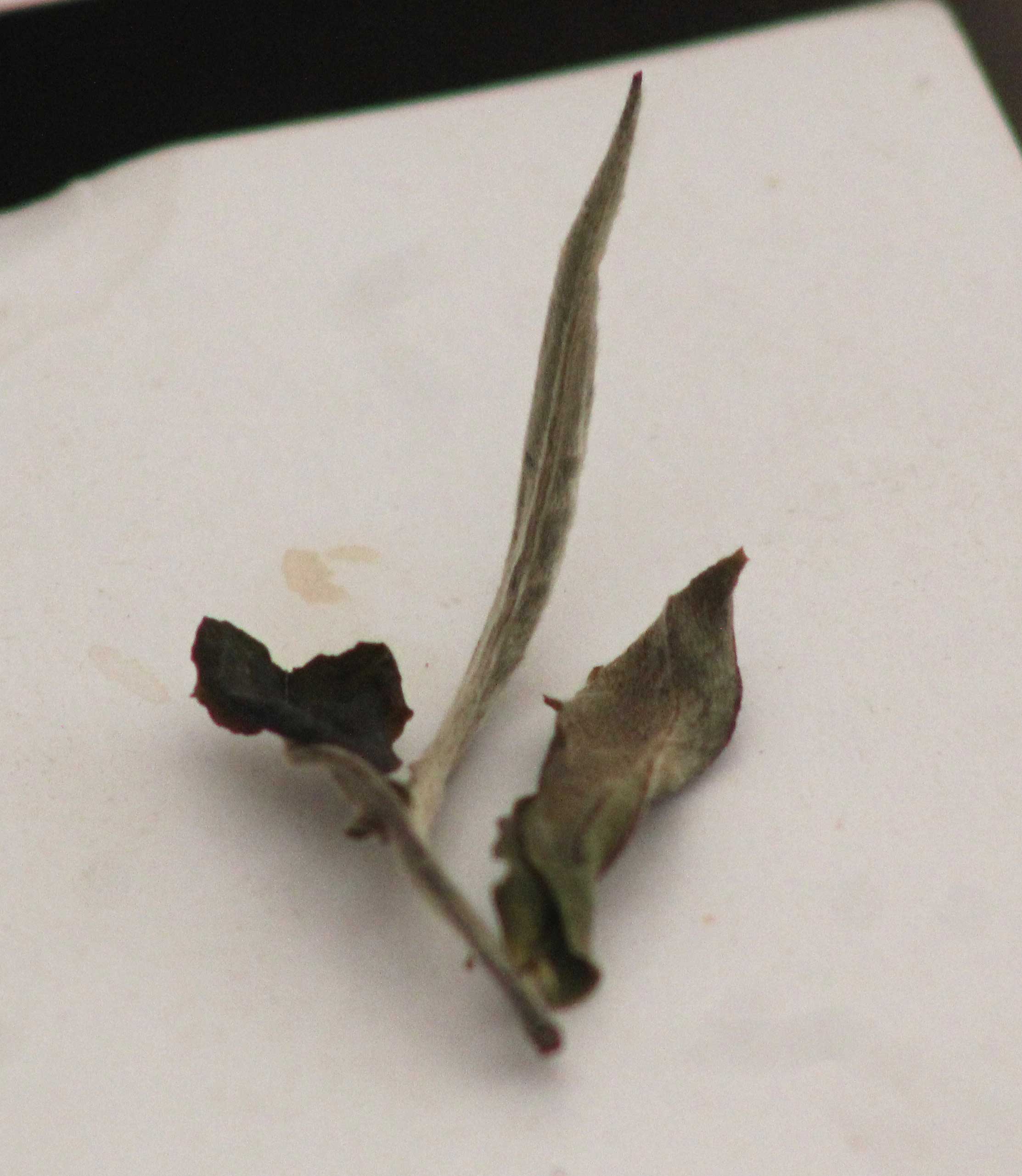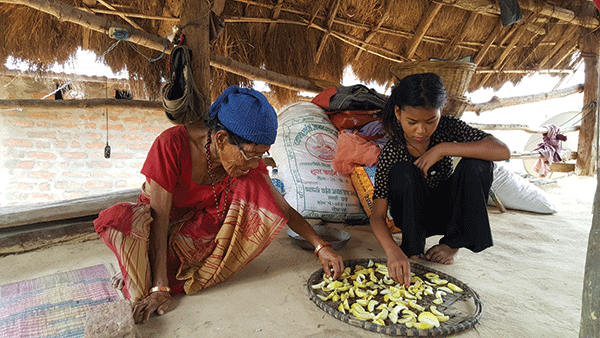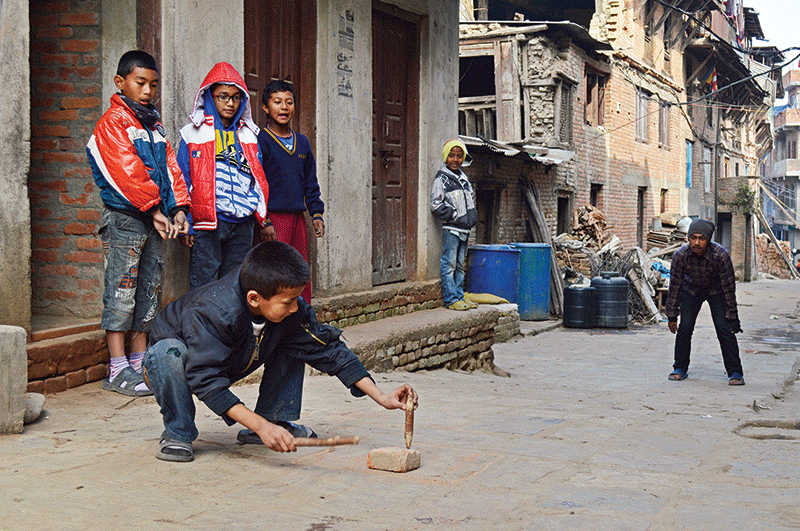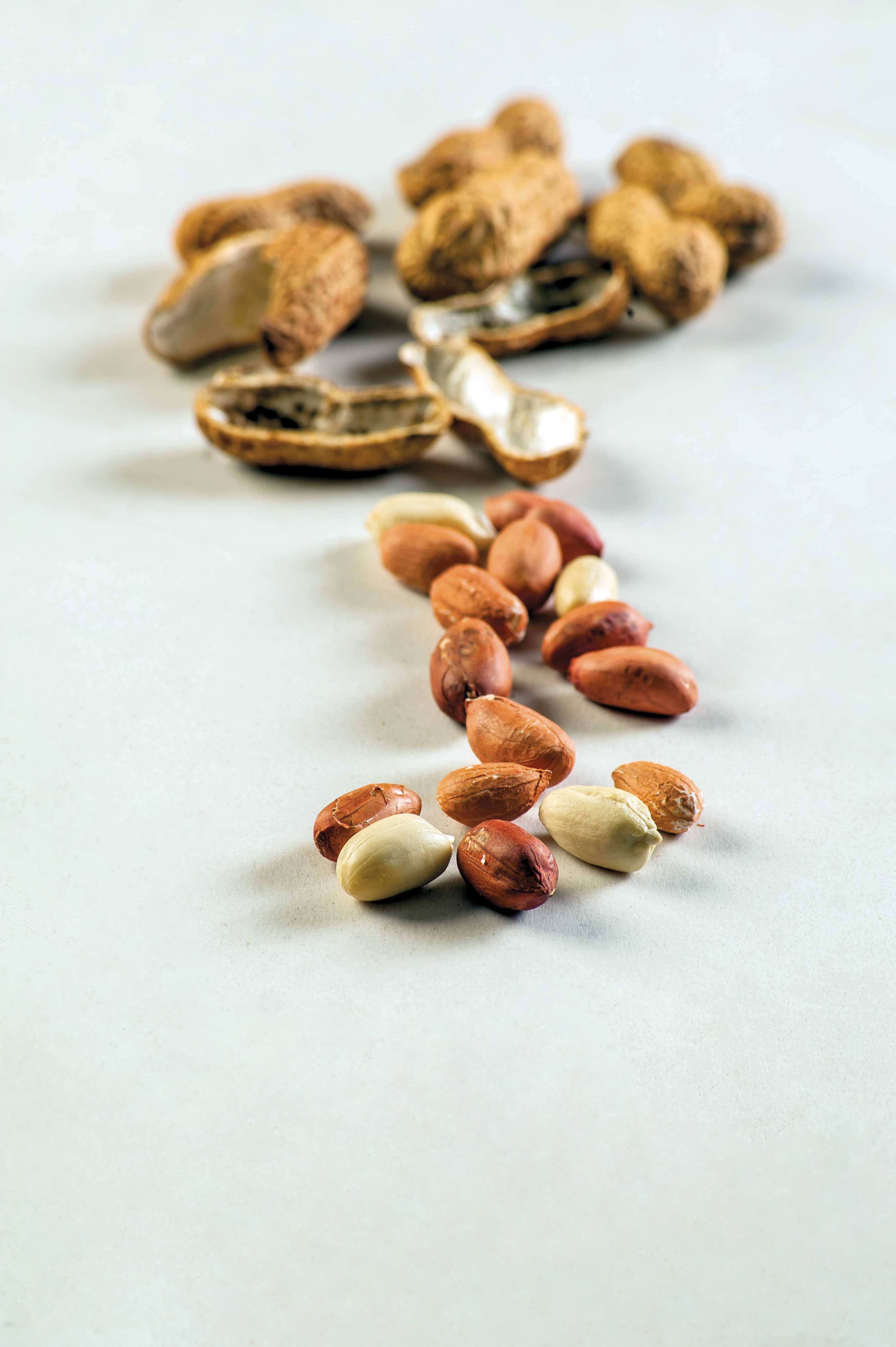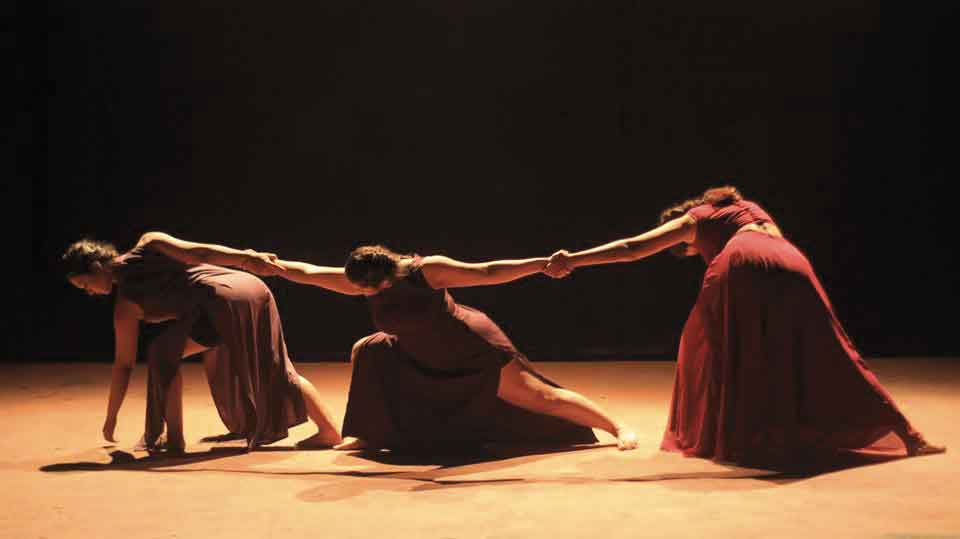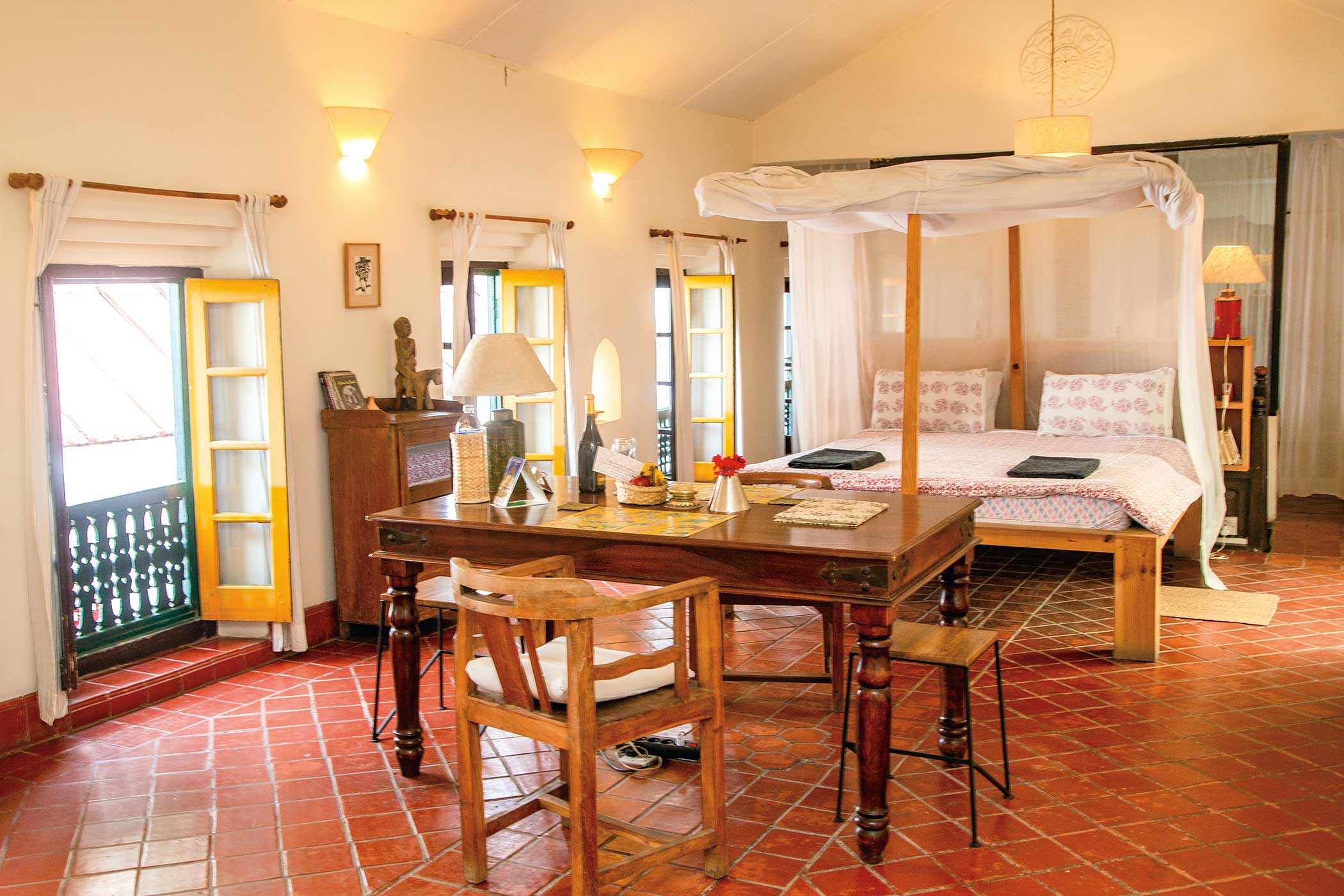Chakku, or hardened black molasses, is considered a great source of energy and the Sankranti’s special treat.
Plates glisten with steaming tubers and sweets under the warm, mid-January sun. A rich mix of colors and textures characterize this platter. The chocolaty molasses are creamed with ghee or clarified butter and its aroma is tempting enough for a sizable bite. Slices of purplish yam garnish this buttery chunk along with boiled tubers of sweet potato. Sesame sweets, in black and white, complete the assortment rendering a monochromatic look to the whole. The til ko laddus are prepared by mixing sesame seeds with molasses and natural sweeteners, which are shaped into tiny, round balls – a favorite pick for youngsters. The white ones are considerably sweeter than the ones prepared from black sesame seeds, considering its slightly bitter tang and the lingering essence of the molasses.
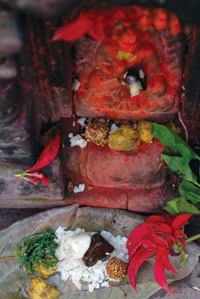 Packaged in transparent plastic bags, these savories hit the local markets a few weeks before the start of the festival – Maghe Sankranti. The start of Magh – 10th month of the Nepalese calendar, is celebrated as the flavorsome Maghe or Makar Sankranti. A prominent solstice festival of Nepal, it literally translates to the first day of the month (Sankranti), when the sun enters the zodiac of Capricorn or Makar.
Packaged in transparent plastic bags, these savories hit the local markets a few weeks before the start of the festival – Maghe Sankranti. The start of Magh – 10th month of the Nepalese calendar, is celebrated as the flavorsome Maghe or Makar Sankranti. A prominent solstice festival of Nepal, it literally translates to the first day of the month (Sankranti), when the sun enters the zodiac of Capricorn or Makar.
Considered the coldest day of winter, it signifies the sun’s northward movement. Religiously, however, it marks the death of Bhisma, who according to the epic Mahabharata had powers to decide the time of his death. He then chose the day of Sankranti for transience, right after the epic battle Kurukshetra ended. The belief has thus been carried that the ones who pass away on the day of Maghe Sankranti receive moksha or liberation of the atma, or the soul. Although Hinduism follows a lunar calendar, sankranti is a solar event and takes place approximately 21 days after the tropical winter solstice, or gradual increase of the duration of the day.
Traditionally, Maghe Sankranti also commemorates the beginning of the harvest season, and is marked with great festivity, that corresponds to taking a dip in confluences of holy rivers and with special delicacies consumed only this time of the year. For the ethnic group of Magars, however, the day is equivalent to their New Year - celebrated with grand communal gathering, and fanfare.
Chakku, or hardened black molasses, is considered a great source of energy and the Sankranti’s special treat. The chakku is dipped in a thick paste of traditionally prepared clarified butter or ghee resulting in a sweet gooey flavour – a fitting starter for the occasion. Other accompaniments include boiled sweet potatoes or sakarkhanda and yam or tarul, smeared in ghee and sprinkled with salt. Sesame sweet nevertheless adds to this variety.
The main course follows a delectable mix of lentils, rice, beans and spices cooked in ghee, also called khichadi and served with traditionally cooked meat, spinach and achhar or spiced pickle – which can be considered a typical Nepali khana or meal. Specialty of the Magar culture, however include bara – spiced lentil pancakes that are deep-fried and sel roti, a ring like bread, that is deep-fried and prepared from rice flour.
Maghe Sankranti is typically a day spent with family, basking in the sun, and pampering oneself with food and oil massages - it ensures that one is well fed and nourished until the winter lasts!


